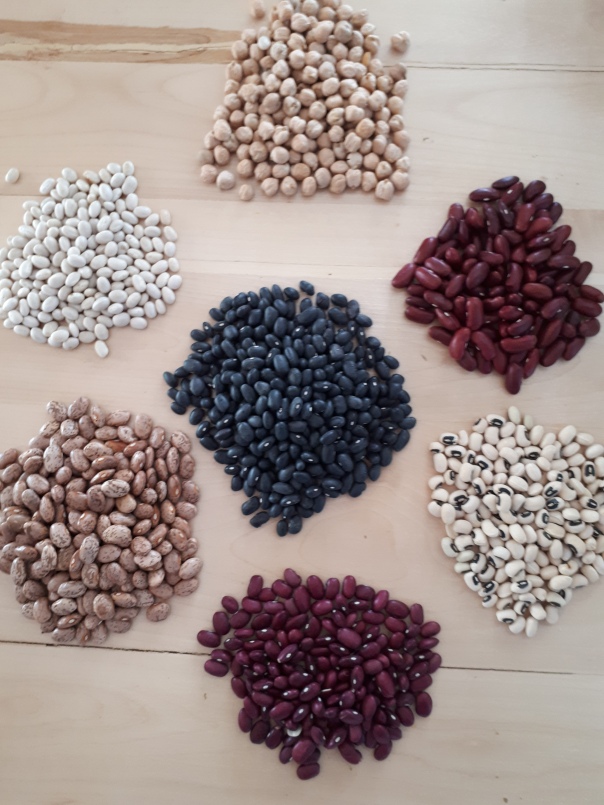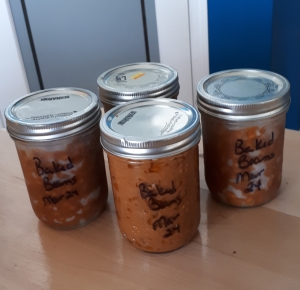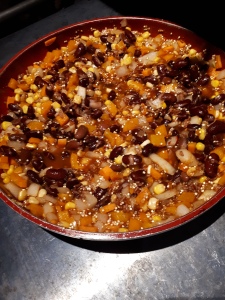April 5, 2018
Pretty much the first question you get asked when someone finds out you don’t eat animal products is, “Where do you get your protein?” However, protein is easy to get. All plants contain protein. Our body requires about 6% to 10% of our calories to come from protein. Even fruit averages 5.5% to 10% protein by calories, and beans are about 25% protein. Leafy greens are 35% to 51% protein. So if you are eating a whole food plant based diet (ie large amounts of calories not coming from refined oil and sugar), protein is not an issue. In fact, protein deficiency is seldom seen without a calorie deficiency. The real question we should all be asking is “Where do you get your fibre?”
The diet of almost all North Americans is deficient in fibre. Why is fibre so important? Until relatively recently, it was thought fibre was for regulating bowel functions. Consuming lots of fibre rich foods made you feel full without added calories and made sure waste was efficiently expelled out our body. But recent research shows that fibre is important for so many more reasons, including boosting our immune system, feeding the cells that line our intestinal walls, and feeding our good gut bacteria. As well, recent research shows that beans have a modulating effect on blood sugar. Watch this short 3 minute video on Beans and the Second-Meal Effect.
Much is made these days of probiotics – which supply a host of good bacteria to our gut. But what happens if we fail to feed those good bacteria? They starve and die. Of course, you could continue to ingest more probiotics, but a far better solution would be to feed your good bacteria and let them multiply on their own. What do those good bacteria eat – fibre.
Where do we get fibre? Animal products – flesh, milk, cheese, eggs, etc. – contain no fibre. However plants – whole grains, vegetables, fruits, nuts, seeds and legumes are great sources of fibre. Stay away from the refined/processed foods plant fragments like white flour and white rice – which have been processed to remove the fibre component.

One exceptionally good source of fibre is beans. Beans are undervalued in the modern North American diet. Often considered “peasant food”, beans are infrequently consumed. However, beans are superfoods, loaded with protein, iron, zinc, folate, potassium and fibre.
Being a long time plant based eater, I thought I consumed a lot of legumes – beans, chickpeas, lentils, dried yellow or green peas. However, I was only consuming an average of five servings a week. Since making use of Dr. Greger’s Daily Dozen recommendations, I have been striving to eat three servings per day. At first, this seemed like an impossible task. However, one serving of beans is only a half a cup. With a bit of planning, this is not as difficult as it seems. Most days I am able to get my three servings in. The secret is staying mindful of what you are eating. I keep a good stock of frozen cooked beans and lentils; and in addition to great main dish legume meals they can be added to pretty much anything you are cooking. Add chickpeas or lentils to your rice stir fry, add beans to your soup, serve seasoned beans as a side to any plate or add hummus to a wrap. Think outside the box, many cultures eat legumes for breakfast and baked beans (recipe below) is becoming a breakfast favorite for me. I made a great Yellow Split Pea Dahl that I plan to use for a spicy start to my day. I will share that recipe with you soon.
One of the biggest reasons people give me for not eating more beans is gas. However, I am finding that the little ditty “Beans, Beans, the musical fruit. The more you eat the more you toot.” should actually be changed to “..the more you eat the less you toot!” The gas is caused by bacteria in our gut consuming undigested bean sugars, producing gas. The sugar is undigested because most of us lack the enzyme to digest it. But, our bodies are truly miraculous creations and incredibly efficient. If we don’t eat a particular food, it does not bother making the enzymes to digest it. However, when we start consuming the food regularly, the body will adapt and produce enzymes required to digest it. So if bean induced flatulence is an issue for you, have faith and stay the course. Eat small portions often (several times a day) and if necessary, use digestive enzymes (alpha-galactosidase). Have confidence – this too shall pass. LOL Besides, intestinal gas is normal and healthy, even if it is occasionally embarrassing.
Below are some of my favorite bean recipes. I will post a few more new ones in the upcoming weeks.
Baked Beans

This is an adaptation of a traditional homemade port and bean recipe from Diane Bachewich in the Sandy Lake Cookbook. I have included two versions – one quite similar to the original but veganized; and the other – a whole food plant based version using dates and tomato paste instead of sugar and ketchup. Either way this recipe is one of my favorites. Its great served with baked or scalloped potatoes and a large salad; as a bean side to any meal, or for breakfast along with whole grain toast or roasted potatoes.
This recipe makes about 12 cups of baked beans, enough to feed a crowd. I like to pack it into 2 cup containers and freeze them. Then I can keep a container in the fridge all the time for a quick bean add on to any meal.
Version 1:
- 3 cups dried small white beans
- 1 tsp salt
- 2 tbsp molasses
- 2 tsp mustard
- 1/4 cup brown sugar
- 1/4 cup ketchup
Version 2:
- 3 cups dried small white beans
- 1/2 cup dates
- 1 tbsp miso
- 2 tbsp molasses
- 2 tsp mustard
- 1/4 cup tomato paste
- 2 tbsp vinegar
- 1 tbsp Worcestershire sauce
- 1/4 cup tahini
Soak the beans in plenty of water overnight. (for version 2, soak the dates in water as well.)
In the morning, drain the beans, add fresh water and boil for about 1 hour or until tender. Drain the beans. (Version 2 – Do not drain the dates. Place soaked dates and soaking water in a blender and blend until pureed. Add remaining ingredients and blend until well combined)
Place the drained beans in a large oven safe pot or roaster. Add remaining ingredients and enough fresh water to cover the beans. Mix well and bake at 350F for about 1 hour. If the beans are still very runny, continue to bake until the right consistency is reached. Taste and adjust seasonings to your liking.
More Recipes

Soups are a great way to add beans, lentils or chickpeas to your diet. Check out this post on Soups for my favorite recipes.

Hummus is another delicious way to add legumes to your diet. 1/4 cup of hummus is one serving of beans. Add hummus to a wrap or sandwich or try it as a topping on potatoes instead of butter and sour cream. The recipe for my all time favorite hummus is a sweet and spicy Sweet Potato Hummus can be found at this link. My grandkids love hummus and like to dip pretzels or veggies into it.

Main Bean Dishes – these are some of my favorite fast and easy one dish beany meals:
White Beans:
Small white beans, also called navy beans (so called because they were used aboard ships) are one of my favorite beans. They are versalite and great for bean dishes like baked beans but also for creamy sauces. I often make cashew sauces using half cashews and half cooked white beans. Or substitute some of the cashews in a creamy oil free salad dressing with cooked white beans. Or try adding mashed white beans to mashed potatoes for a boost of nutrition including fibre. You won’t even know they are in their! Or try my Creamy White Bean Soup.
